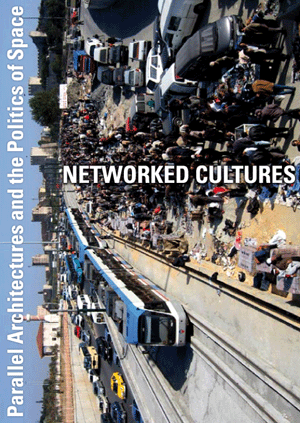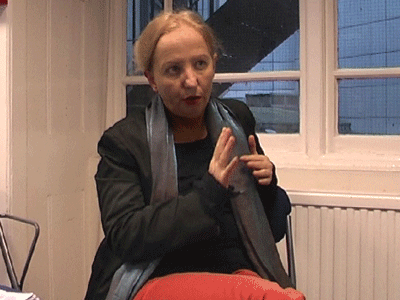_loginregistrieren_database_5 Factories - Worker Control in Venezuela Dario Azzellini & Oliver Ressler _ALMOSTREAL ECF _AnArchitektur Jesko Fezer _Arizona Road Azra Aksamija _Balkan Konsulat rotor _Bata-ville: We are not afraid of the future Nina Pope + Karen Guthrie / www.somewhere.org.uk _Black Benz Race krcf in collaboration with Felix Stalder, Arben Gecaj, Faton Topalli and Osman Osmani _Black Sea Files Ursula Biemann _Camp La Jolla Military ParkOwen Mundy _CHANGE REALITY: Renaming the Streets of Zagreb REINIGUNGSGESELLSCHAFT _Conceptual Paradise. There is a place for sophistication Stefan Roemer _de-regulation Irit Rogoff, Kutlug Ataman, Stefan Roemer_news ____________Bloomberg SPACE, London ____________Kumu Art Museum Tallinn ____________Open Space, Open Systems - Vienna ____________CAA 2011 Conference, New York ____________Forum Stadtpark, Graz ____________Symposium, Istanbul ____________lungomare, Bozen/Bolzano ____________Metropolis Biennale 2007-17, Copenhagen ____________new publication available now ____________Mestna Galerija, Ljubljana ____________Livestream of Networked Cultures documentary ____________ |
_ConversationsMarjetica Potrc
Marjetica Potrc
PM/HM: In your exhibition work Temporary Building Strategies you trace moments of eruptions of new spatial realities in locations as distant from each other as Latin America and the Western Balkans. What is your interest in pursuing this kind of fieldwork? Marjetica Potrc: I am interested in bottom-up initiatives and, yes, you can say that when I do this I am also tracing the dissolution of top-down initiatives, such as the modernist project. The modernist state is organised top-down and is large-scale. I believe that the future will be on a smaller scale, and that it will depend more and more on individuals who are socially conscious. For instance, the people in the Amazonian state of Acre, in Brazil, who manage extraction reserves, which are small-scale territories, are aware of their contributions to the world community. They propose a small-scale economy as a workable alternative in an age beyond the ideologies of communism or capitalism. My practice is focused on on-site projects as well as on exhibition-based works. These latter are case studies. I started to exhibit case studies as a way of pointing to building practices across the world that are about self-sustainable architecture and are, typically, small in scale, which means they represent bottom-up initiatives. As an example, take Xapuri: Rural School, which I showed at the Sao Paulo Biennial in 2006. This is a case study of a primary school that has been built in a remote area of the Amazonian forest in the Brazilian state of Acre. Typically, such a school is equipped with extensive solar panelling and a satellite dish, in other words, a source of energy and a means for communication with the world. The school stands for knowledge, the solar panels stand for power, and the satellite dish stands for communication. The Acreans call such schools 'power kits'. I believe that architecture is a living language. You can read it. By reading architecture you can understand the value systems of the people who build it. The case study of the Prishtina House is a good example. I showed it twice, once at the Portikus in Frankfurt and a second time at the Kunstverein in Hamburg. Its decorative facade and the way it demarcates its territory point to the celebration of existence by the mostly rural population who have landed in Prishtina in recent years. Prishtina is the capital city of Kosovo, where currently you have three different governments; this means that no government really functions properly and the people themselves are constructing the city from the bottom up. We say that in Prishtina a citizen is the smallest state. Prishtina House also points to successful survival in conditions where the state infrastructure has broken down. At times when there are electricity outages and the street lighting doesn't work, the Prishtina House provides the street light, which is powered from the house itself. PM/HM: Talking about spatial developments in Prishtina and those new hybrid structures that are emerging in many other cities in this region, there is a lack of terminology to describe the new aggregations of people and communities. Are they a side effect of globalised economies, a kind of globalised language aligned with more peripheral cultural connections? Marjetica Potrc: When I travelled through the region of the Western Balkans with Kyong Park in 2005, we found there was one thing that was really obvious which struck me deeply: the shrinking of the ideal residential unit in the region. In the 1980s, you would have residential neighbourhoods with maybe 10,000 residents. Today in the Western Balkans, there are new architectural typologies of residential architecture that are dramatically smaller: the Urban Village and the Urban Villa. The Urban Village is a community of about 2,000 people, while the Urban Villa is a community of some 15 families. Today, the extent of people's desired co-existence is small in scale. Note that 15 years ago, modernist architecture, as well the modernist state, defined the mainstream way of life both in the Western Balkans and in the former Western Europe. The new typologies I'm talking about are entering the architectural language of the European Union only slowly and timidly. You can say that in this regard the Western Balkans is a faster region and the European Union is a slower region. PM/HM: You articulate a strong belief in local governance rather than hierarchically organised forms of power, and the question then is, how can we take care that these collaborations and forms of co-existence are played out in a sustainable and non-oppressive way? Marjetica Potrc: I come from the former Yugoslavia, where the fragmentation of territories over the last 15 years was traumatic and terrible because of the wars in the 1990s. All the social structures collapsed. During this same period, in Brazil's western state of Acre, more than half the state territory was given to small-scale communities for self-management. These are extraction reserves populated by traditional communities such as rubber tappers and Indians. I call such fragmentation a happy fragmentation. It is also a great example of collaboration between the state of Acre and local communities. The self-dissolution of the state territory came about because both local communities and the state recognised the failure of large-scale modernist projects in Acre in the past (such as the large-scale extraction of timber, the large-scale extraction of rubber, the clearing of the forest for cattle pasture, and of course infrastructural projects such as the railway and highway). But another reason was that they recognised a possible future: successful territories such as extraction reserves are self-sustainable and small in scale. It is also about survival. The communities in the Acrean forest say: “If we survive in the forest, the forest will survive, and this is good for all.” In the Western Balkans, informality took off in the 1990s (with the informal city, the informal economy, the informal construction industry, etc.) because the state was non-existent. At some point, the informal economy in Belgrade and Tirana actually allowed these cities to survive. Informality also expressed the need to redefine the social contract. One must understand that eventually every kind of informality desires to become formalised in a new social contract. Existence and co-existence are givens, but how you practice them is not a given. In my work, I point to the power individuals have when they try to build their lives, and in so doing re-formulate co-existence and existence. I used to be uncomfortable when talking about the future, until I got involved with the Europe Lost and Found project and the Lost Highway Expedition. I always thought it was utopian to ask, “What is the future?” I realise that I am using the word more and more. I am particularly interested in the future of territorialisation. I am talking about acceleration into a fragmentation of territories, but I am also talking about individuals. When individuals are socially conscious, they are aware of, and can pursue, the common good. I am now talking about a concept called 'singularité'. The term has been with us since the 1970s, if you think about theories of Yona Friedman and Constant's New Babylon, the Mobile City, and so on. In Brazil, you see it if you look at Helio Oiticica, who talks in 'Mundo Abrigo' ('world shelter') about the individual who is socially conscious, who understands himself or herself as a part of the world but also as contributing to it. In the 1960s, this was packaged as a kind of utopia. Note that the term Balkanisation has been recently rethought. It used to be a negative term, describing the dissolution of a unity. These days, it is recognised as a force for democracy. It's about families, clans, communities, group identities, bottom-up initiatives, new citizenships, and self-rule, all building up to a larger society. There are many successful and articulate bottom-up initiatives today. There must be a reason for this. One typical example that comes to mind is 'Barefoot College' in India, a project that started 30 years ago because of the failure of the state there. Today the group is successful not only because they can manage their own little settlement, but also because their strength actually comes from the fact that they collaborate with other rural communities across the world – in Kenya, Eritrea, Afghanistan, Southern India, Nepal and so on. The network they produced is cross-national and a very good example of the strength of a network.
|
_broadcasts_conversations+ Ana Dzokic and Marc Neelen+ Ayreen Anastas and Rene Gabri + atelier d'architecture autogérée (aaa) + Asya Filippova + Sophie Hope and Sarah Carrington + Branca Curcic + Christoph Schaefer + Campement Urbain + Claudia Zanfi + Despoina Sevasti and Poka-Yio + Erden Kosova + Helmut Batista _textsRadio as Spatial Practiceby: Paulo Tavares Survival Kits: Artistic Responses to Globalizationby: Marga van Mechelen What Ever Happened to Cultural Democracy?by: Sophie Hope I don't know how to explain ...by: Anca Gyemant Trading Placesby: Peter Moertenboeck & Helge Mooshammer Milosevic as Architectby: Srdjan Jovanovic Weiss When the Unavoidable Knocks at the Door ...by: Gulsen Bal Tracing Translocality: The BlackBenz Raceby: Felix Stalder travelling lexicon towards a global positioning systemby: Celine Condorelli |
